Invisalign Clear Aligners – Des Plaines, IL
Get Your Teeth in Line!
Have you ever wished you could straighten out your smile without having to get bulky wires and brackets? If you have, your Des Plaines dentists at Brite Smiles can use Invisalign aligners to get your teeth in line!
These clear plastic trays can correct a variety of alignment issues much more subtly and conveniently than traditional braces. If that sounds intriguing, call us today for a consultation to see if Invisalign could be a good option for you!
Why Choose Brite Smiles for Invisalign?
- Advanced Imaging Technology for Mess-Free Impressions
- Flexible Hours To Fit Your Schedule
- Financing Options Available Through CareCredit
How Invisalign Works

Invisalign aligners are a series of sleek plastic trays that are custom fit to your teeth. They’re designed to put pressure on the teeth as you wear them to slowly move your smile into alignment.
To get the full effect, you’ll need to wear the aligners for 20-22 hours a day, which means only removing them to eat and brush your teeth. Each set of trays will be worn for a week or two before being replaced with another, tighter set of aligners. After 12-18 months, this will leave you with a perfectly straight smile!
Benefits of Invisalign
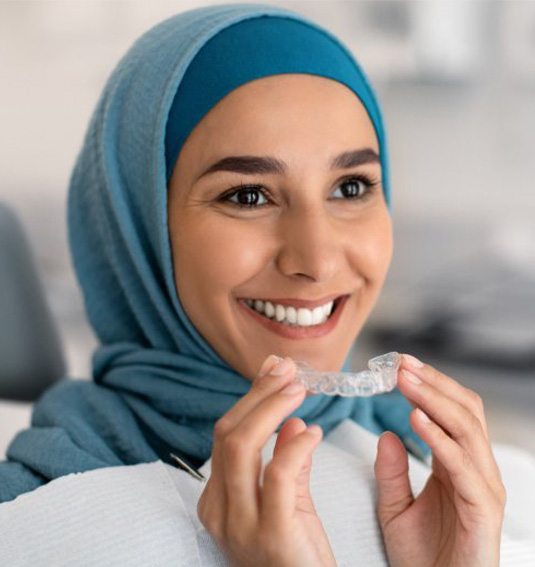
Invisalign offers a modern, discreet way to straighten your smile without the hassle of traditional braces. Using a series of clear, removable aligners, the treatment gradually shifts your teeth into their desired positions while following a customized plan specially crafted for you! Our dental experts, Dr. Patel and Dr. Sani have already helped many patients improve their smiles with Invisalign at Brite Smiles. If you’d like to see how Invisalign can improve your orthodontic experience, read more below!
Improved Comfort

Invisalign aligners are made from smooth, BPA-free plastic, ensuring a comfortable fit without the irritation caused by metal brackets and wires. Each set of custom-made trays fits snugly over your teeth, guiding them into place with gentle, constant pressure. With no sharp edges or jabbing wires, you’ll feel less discomfort, allowing you to go about your day without a care.
Improved Oral Hygiene
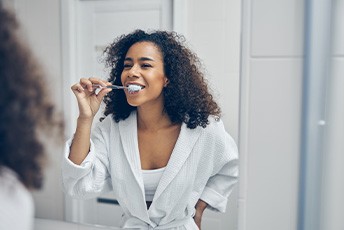
Since Invisalign aligners are removable, keeping your teeth clean is far less of a chore. You can brush and floss your teeth as you normally would, without needing to navigate around cumbersome brackets and wires. This ease of cleaning helps prevent plaque buildup, tooth decay, and gum disease during your treatment, promoting a healthier mouth.
Nearly Invisible Aligners
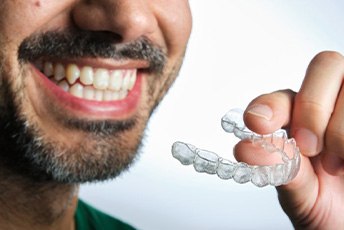
One of the standout benefits of Invisalign is its virtually invisible design (it’s in the name after all!). The clear aligners are hardly noticeable, allowing you to straighten your teeth without drawing attention to your treatment. This discreet approach is great for adults and teens who want to avoid “metal mouth,” keeping their smiles pristine for photos, meetings, networking, and social events.
Convenient Follow-Ups

Invisalign requires fewer dental visits compared to traditional braces, with checkups typically every six to eight weeks. Not only will you be seeing us less often, but your appointments will be shorter as well! This gives you back more of your time, allowing you to keep a more regular schedule while undergoing treatment.
Non-Invasive Treatment

The clear aligners of Invisalign can be removed for eating, drinking, and hygiene, offering flexibility that fits seamlessly into your routine. Your new aligners will slip right into your regular routine, making it easier to keep your treatment on track without changing your diet or giving up the day-to-day activities you love.
Boosted Self-Confidence
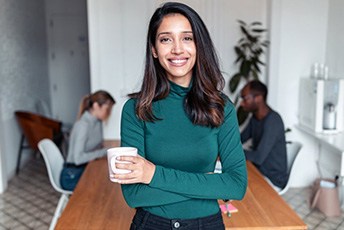
As your teeth become straighter, you'll likely experience a surge of confidence! The subtle appearance of Invisalign means you can smile throughout your treatment without feeling self-conscious. This means that you can continue to aim for the stars when it comes to both work and your social life. No more feeling self-conscious about your smile!
Who Can Invisalign Help?

Invisalign clear aligners are used most often in cases of mild to moderate misalignment. These subtle and comfortable trays can address a range of alignment issues by straightening out teeth to help a patient achieve better oral health. The first step towards Invisalign treatment is having a consultation at Brite Smiles so we can evaluate your mouth and determine if you can be a suitable candidate. Here’s a brief guide to the problems Invisalign can correct, but please contact our staff if you have any questions.
Crowded Teeth

Crowded teeth are too close together, causing them to overlap. This makes them harder to clean, increasing their likelihood of being infected, and easier to injure due to uneven dental wear. Invisalign can address this issue by pushing these teeth apart, allowing them to sit evenly next to one another.
Gaps Between Teeth

A large gap in your smile can be quite noticeable, and some people don’t love how gaps make them look. Thankfully, Invisalign aligners can nudge spaced-out teeth together. In addition to helping a patient feel more confident in their smile, this can protect the gums from injury and reduce the accumulation of food particles between the teeth.
Overbite

An overbite or overjet refers to when the top front teeth are positioned too far in front of the bottom teeth when the mouth is closed, leading to issues like jaw pain, speech difficulties, uneven dental wear, and problems with opening or closing the mouth. This issue also leaves the top front teeth more exposed to injury.
Underbite
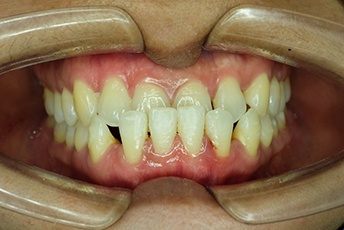
An underbite happens when the bottom front teeth rest in front of or match the top front teeth when the mouth is closed, and it usually results from genetic factors, oral injuries, tumors, or prolonged thumb-sucking or pacifier use in childhood. This misalignment can lead to problems like a greater risk of sleep apnea, mouth breathing, and speech and eating difficulties. Treating an underbite with Invisalign usually involves using attachments like rubber bands to help the clear aligners pull the teeth into their proper positions. While it’s usually easier to address underbites in younger patients, it’s still important to resolve the issue in older ones.
Crossbite

Crossbites occur when the bottom teeth rest slightly in front of the upper teeth and often happen due to genetics, premature baby tooth loss, and bad oral habits. While Invisalign aligners can usually address this issue, this may involve using elastics or other accessories to reposition the jaw. An untreated crossbite can lead to long-term problems like a greater risk of oral infections, jaw discomfort, speech issues, bruxism, headaches, and facial asymmetry that can diminish one’s self-confidence.
Open Bite

If a patient has an open bite, their top and bottom front teeth will not meet or overlap when the mouth is closed, resulting in speech difficulties, uneven enamel wear, and a greater risk of dental injuries. This problem may be the result of improper bone development or prolonged use of pacifiers or thumb-sucking as a child. Invisalign can address an open bite by pulling the top and bottom teeth closer together and into proper alignment.
Living with Invisalign Aligners

At your first official appointment, we won’t just give you your aligners and send you on your way. Instead, your Des Plaines dentist will show you how to take them off and put them on, how to clean them, and how to store them properly. They will also be available to answer any questions that come up throughout your teeth-straightening journey, but you can also learn a bit more on the topic of living with Invisalign right here!
Wearing Your Trays

Really, this boils down to one thing: you need to wear your aligners for 20+ hours a day. That way, your trays have enough time to guide your teeth into the positions they need to be in for the next set. In other words, if you consistently miss the mark, there’s a good chance that you’ll fall off-track with your treatment plan entirely. So, make an active effort to wear them as much as possible, and use the stopwatch on your phone as a guide, if needed.
Cleaning Your Aligners
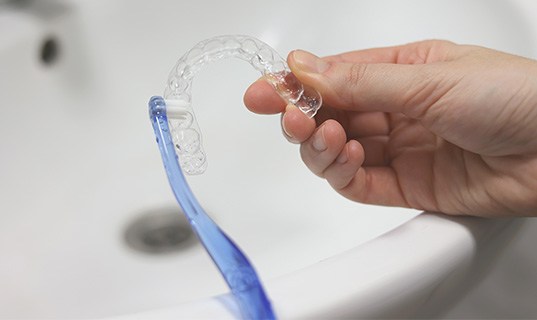
Fortunately, cleaning your Invisalign aligners won’t require too much of your time or any special oral hygiene products. Start by rinsing them with clean, cool water each time you take them off. Then, use a damp, soft-bristled toothbrush and some mild, clear dishwashing liquid to clean them a bit more thoroughly. Lastly, soak them daily in a dentist-recommended cleaner to ensure even the nooks and crannies of your aligners are thoroughly cleaned.
Eating & Drinking

In order to keep your trays in good condition, you need to remove them before eating or drinking anything other than water, including iced coffee. The best thing to do is take them out, rinse them thoroughly with clean, cool water, and store them properly. Then, after you’ve finished your meal or snack, brush your teeth and put your aligners back on right away. It’s also a good idea to drink your coffee with your breakfast instead of separately to help meet your daily wear time goal.
Losing a Tray
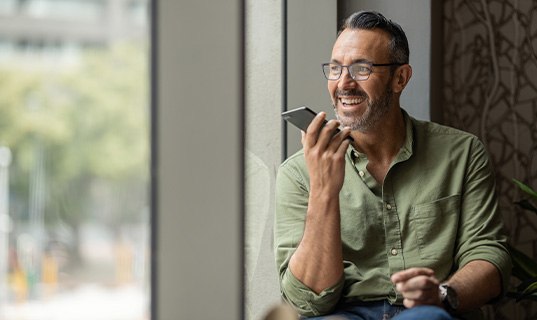
Did you lose a tray? Then take a few deep breaths and carefully retrace your steps. In the process, look in your hamper, the center console of your car, the trash can, and in other “random” places. If you can’t find them, don’t just move onto the next set of aligners in the series. Instead, contact us ASAP so we can determine if a replacement aligner needs to be made.
Routine Check-Ins

Usually, patients with Invisalign come to our office every six or eight weeks so we can monitor their progress. If everything looks good, then the appointment should be less than 20 minutes. If something isn’t right, like one of your teeth isn’t moving as anticipated, then we will need to figure out what steps are needed to get you back on-track with your treatment plan.
Understanding the Cost of Invisalign

Invisalign has a bad reputation for being expensive, but you don't have to be rich to benefit from clear aligners. Various factors affect the cost of Invisalign, but it can be about the same as traditional metal braces. We will help you fix your bite and alignment using a discreet, comfortable solution. It won't cost you an arm or a leg to benefit from clear aligners.
Factors That Affect the Cost of Invisalign

No treatment plans are identical because every mouth and situation are unique. Therefore, it's impossible to have a flat fee for Invisalign because we wouldn't want you paying for anything you don't need. Your dentist will examine your mouth and may perform diagnostic services to create a personalized treatment plan. Here are a few things that may influence the cost:
- Preparatory Treatments: Your teeth and gums must be healthy before any orthodontic treatment. It's not unusual to need a little prep work, like a dental cleaning, filling, or gum disease therapy.
- The Number of Arches: Almost all patients will require Invisalign on both arches. Single arch treatment is rarely recommended because moving teeth on only the top or bottom can affect your bite. A poor bite can cause dental problems and jaw pain.
- Complexity of Case: Patients needing complex tooth movements will require more aligners, which can raise the cost.
Invisalign vs. Mail-In Aligners: Which Costs More?

Mail-order aligners are convenient and cost less than visiting a dentist. However, you can pay much more down the road. Since you're never under the supervision of a dentist, you may not even be a candidate for clear aligners. Not to mention, the slightest error with the impression or fabrication process can move your teeth incorrectly, which can lead to irreversible damage, like tooth loss.
You take the risk out of the process when investing in the qualifications of a dentist. They will ensure Invisalign is right for you and monitor you during your treatment to ensure nothing unexpected occurs. You can rest easy knowing you're choosing a safe, effective solution to fix your smile.
Does Dental Insurance Cover Invisalign?

Your dental insurance may cover your consultation, diagnostic services, and imaging. If your policy includes orthodontics, your benefits may cover some of the expenses after meeting your deductible. We will work on your behalf with your dental insurance to maximize your coverage to lower the amount you will pay out-of-pocket.
Options for Making Invisalign Affordable

In addition to dental insurance, our office offers flexible financial options to keep Invisalign affordable, including:
- Traditional Payments: We accept cash, personal checks, and most credit cards.
- Financing: You can pay any out-of-pocket expenses using a monthly payment plan through a third-party financing company, like CareCredit.
- In-House Dental Plan: You can benefit from discounted services by joining our in-house membership plan.
Invisalign FAQS
Does Invisalign Hurt?
No orthodontic treatment is completely pain-free, but many patients report that Invisalign in Des Plaines is much more comfortable than metal braces. Each aligner is crafted to fit like a glove. You will not experience any irritation to the insides of your lips or cheeks, like with regular braces. You can expect your mouth to be sore for a few days after first wearing your aligners and changing to the next set in your series. Each aligner applies gentle pressure to move your teeth in small increments. You can manage your discomfort with an over-the-counter pain reliever and eating soft foods. As you progress through your treatment, discomfort will be less frequent.
Is Invisalign Expensive?
You don't have to be rich to afford Invisalign. Although every situation differs, it can cost about the same as traditional braces. Many factors will influence the amount you'll pay, like the complexity of your case. If your dental insurance includes orthodontics, your benefits may cover some of the expenses. We also offer flexible financial solutions to keep Invisalign within everyone's budget.
Can I Get Invisalign on Just the Top Teeth?
Single-arch treatment with Invisalign or braces is rare. Your cosmetic dentist in Des Plaines will probably advise against it unless you only need a minor adjustment, like closing a gap between your front teeth. Moving teeth in only one arch can affect your bite, which can lead to dental damage, jaw pain, and many other complications. You can expect to need clear aligners for both your top and bottom teeth.
How Long Does Invisalign Take?
The average timeline for Invisalign is about 12 to 18 months, but many things affect your treatment plan, like your age. Teens are still growing and developing, so their teeth can move more quickly than adults. If you need to make major tooth movement, you'll require more aligners, which will extend your treatment. You can ensure nothing delays your journey to a straight smile by wearing your aligners for at least 22 hours per day. Switch to the next set of aligners every 1 to 2 weeks as instructed by your dentist. Maintain your follow-up appointments to ensure your treatment stays on track.
Am I Too Old for Invisalign?
There's no age limit for a straight smile. Whether you missed your chance for braces as a child or your teeth have shifted over time, you may be a candidate for Invisalign. Your cosmetic dentist will examine your mouth to ensure it's right for you. Age is just a number when it comes to investing in a straight, healthy smile.
Is There Anything I Can’t Eat with Invisalign?
There are certain foods we recommend avoiding or, at the very least, steering clear of. Hard pretzels, candy canes, and peanut brittle are great examples because they are extremely tough, which increases the risk of one of your attachments breaking or your enamel cracking. We also encourage our patients to be mindful of their intake of added sugar since a cavity can lead to treatment plan delays. In short, while there technically aren’t any dietary restrictions, it is important to eat a well-balanced diet to avoid orthodontic emergencies and treatment plan delays.
How Do I Clean My Aligners?
You don’t want your aligners to turn yellow, drawing unwanted attention to your orthodontic treatment in the process, right? Fortunately, you probably have everything you need already to keep them stain and odor-free: clean, cool water, a soft-bristled toothbrush, and clear, mild dishwashing liquid. Consistency is key, so make sure that you’re cleaning them each morning and evening (or after every meal, if possible). It’s also important to take them out before eating, to rinse them thoroughly with clean water each time you take them off, and to soak them in a clear aligner solution every so often.
Can I Drink Coffee with Invisalign?
You cannot drink coffee (even iced coffee!) while you’re wearing your aligners. You can, however, enjoy this caffeinated beverage if you take them off first. Enjoying your morning cup alongside your breakfast is a good habit to get into since your aligners will already be out. Plus, you’ll be brushing your teeth afterward, so stubborn stains are less likely to develop.
How Often Do I Need to Wear My Aligners?
You need to wear your aligners for 20+ hours a day, every day. If you’re finding it difficult to meet this goal, then try creating a schedule with the help of the stopwatch on your phone. Not only will this give you an idea of how close or far you are, but it will also show you where adjustments can be made. For example, maybe you only need 15 minutes for breakfast instead of 45, giving you more time at the end of the day to enjoy dinner.
Tip: Use the reminder tool on your phone too! That way, you don’t forget to put your aligners back on after eating or brushing your teeth.
What Happens After Invisalign?
During your Invisalign treatment, our focus is on moving your teeth and bite into proper alignment. Once you’ve worked through your series of trays and you’re happy with your results, our focus will shift to maintaining the alignment of your teeth and bite. We accomplish this with a retainer, which will be custom-made from impressions of your teeth. Our Des Plaines dental team will provide you with specific instructions on how to care for it and when to wear it (which is usually while you sleep each night).



